Sometimes, in order to be heard, you have to speak up.
But for children and mothers around the world who often don't have a voice or a seat at the political table, we need leaders who will speak on their behalf.
Secretary of State Hillary Clinton did just that in a landmark speech at the National Institutes of Health. She reminded us of some recent successes we've had in the fight against global HIV/AIDS, which have presented the world with an historic opportunity "to change the course of this pandemic and usher in an AIDS-free generation."
As Secretary Clinton pointed out, we've never before had as many tools to get ahead of the disease as we do now. She outlined a combination prevention strategy that takes advantage of new techniques to stop the spread of the virus among adolescents and adults, such as voluntary male circumcision and HIV treatment as prevention.
But one of the cornerstones of her strategy to create an AIDS-free generation is a tool we've actually had in our arsenal for a long time: the ability to prevent mother-to-child transmission of HIV.
The fact that an HIV-positive woman can have an HIV-negative baby is one of the greatest but least known success stories in the thirty-year fight against AIDS. Scientists discovered how to prevent mother-to-child transmission of HIV (PMTCT) almost two decades ago. By providing antiretroviral drugs to pregnant women and administering them to their babies after birth, doctors were able to reduce the HIV transmission rate to as little as two percent.
Because of this, new HIV cases in children dropped dramatically in the U.S. and other countries, to the point where we have virtually eliminated pediatric AIDS in the developed world.
In many respects, it's been a relatively quiet success. Most Americans aren't even aware that an HIV-positive woman can have an HIV-negative baby. Nor are they aware that we have the ability to prevent almost every one of the 1,000 new HIV infections in children that still occur around the world every day.
Not only do we know what to do to create a generation born free of HIV, but we also know where to do it. Ninety percent of these infections occur in just 22 countries, almost all in sub-Saharan Africa.
A decade ago, organizations like our own were able to help jump-start PMTCT programs in several countries in this region. There were many early challenges, including the effects of stigma and lack of human resources and health infrastructure, but we proved to skeptics that it could be done. Mothers also proved that given the opportunity, they would do anything to protect their children from this disease.
These early PMTCT programs -- funded by international organizations, the U.S. government, corporations, and individual donors -- became the platform upon which other HIV prevention and treatment programs were ultimately built, including the President's Emergency Plan for AIDS Relief (PEPFAR) started under the Bush administration, and the Global Health Initiative begun by the Obama administration.
These U.S.-led programs have strengthened overall health systems, built and sustained capacity to confront HIV and a host of other illnesses, and saved millions of lives. In fact, for mothers and children, these investments have already changed the course of the pandemic. They have brought us to the point where we can realistically talk about ending pediatric AIDS.
In 2005, only 14 percent of pregnant women in need had access to services to prevent transmission of HIV to their children. Today, that figure is 53 percent. The quality of these services has also improved, so that a mother living in Botswana will soon have the same opportunity to protect her child from HIV as a mother living in Boston.
In Swaziland, a small African country with the highest HIV prevalence in the world, a young mother recently put this progress into perspective for us. While receiving care at a clinic supported by our foundation through PEPFAR, she explained, "I may be HIV-positive - but because of PMTCT, my son is not... PMTCT works!"
The urgent challenge that lies before us now is to reach the other half of women who don't have access to these lifesaving services. The Elizabeth Glaser Pediatric AIDS Foundation and other partners have coalesced around a global plan led by PEPFAR and UNAIDS to accomplish this, and end virtually all new HIV infections in children. As Secretary Clinton said, this is one of the greatest gifts we could give to our collective future.
As we stand at this critical moment, and as budget priorities are being debated in the U.S. and around the world, we need to speak up about this unprecedented opportunity to save both money and lives by investing in prevention that works. It strengthens families, stabilizes communities, and builds serious good will around the world.
In the early days of the epidemic, our founder Elizabeth Glaser was vocal about the need for urgent action to stop the spread of AIDS in children -- and she wouldn't take no for an answer.
"There should be an uproar of children shouting, 'What about me?," she said. "But they often can't speak and so their plight goes unnoticed until an outraged parent decides to speak out."
Around the world, millions of mothers are still fighting to get our attention, and to give their children a chance at an HIV-free future. We need to make their fight our fight, and finish the job of ending pediatric AIDS and building an AIDS-free generation.
If we don't, a new generation still grappling with the scourge of HIV/AIDS will look back at this time, and ask us:
"What were you waiting for?"
